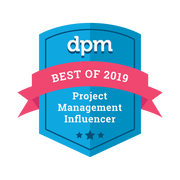When you use coaching as a leadership style, you are better able to deepen your interactions, build trust and create an engaged and empowered team. Bob Nelson said that ‘you get the best effort from others not by lighting a fire beneath them, but by building a fire within’. The fire within can be stimulated by engaging with people’s ideas and by positively challenging their ways of thinking. I love the way Liz Wiseman describes it in her book ‘The Multipliers’. She says that the best leaders shift the burden of thinking to others by asking questions that challenge them, not only to think, but to rethink.
It can be challenging not to give advice
When you coach you are driven by curiosity and by the desire to surface understanding and insight in the team member. That enables the team member to find their own solutions. Listening fully, and asking open questions – without layering your own solutions on top - is one of the best ways to do that. But stopping yourself from giving advice is easier said than done. In fact, it can seem counter-intuitive, as many managers feel that their job is to provide solutions, and to do it quickly. But providing the solution and telling others what to do can be very disempowering for others, even if it gets the issue resolved here and now. Your role as a leader is to help the employee deepen their understanding of the situation by asking great questions and guiding them to see what the way forward is. In that sense, coaching encourages your team to take responsibility for the changes they want to see, and to identify the steps required to realise those changes.
Strengthen your listening skills
One of the biggest building blocks of coaching is to fully listen to what the employee or team member is saying, without interrupting or impatiently wanting to move on. To be an effective coach at work, you need to make use of your best listening skills, which means that you should aim to listen at Level III:
- Level I – Internal listening – This is when you are primarily focused on your own inner voice, thoughts, feelings and opinions whilst the other person is speaking. It basically means that you’re only partially paying attention to the other person, because you’re busy listening to your own mind chatter. Most of us listen at this level most of the time.
- Level II – Focused listening – This is when you keep an intense focus on the other person and are paying attention to every word they say. Nothing is distracting you. When you listen at this level, the other person will feel the gift of your attention. They are more likely to open up and trust you.
- Level III – Global listening – Believe it or not, but there is an even higher level of listening. When you listen at level III, you don’t just listen intently with your ears - you use your entire body and your intuition. You’re so tuned into the other person that you notice expressions, tone of voice, hesitations, sadness, lightness and shifts in attitude. When you listen at this level you will know intuitively what the best question is to ask next.
Listening at Level III may take some practice as many of us are focused on our own internal dialogue. To hone your listening skills, begin to observe people when they speak. Be fully present and seek to hear beyond the words. Notice their body language and emotions and what they are really trying to say.
The GROW model provides a good framework
One of the most popular frameworks for structuring a coaching conversation is the GROW model, which stands for Goal, Reality, Options and Will do. Even if you don’t follow the model step by step, it gives you a good understand of how you might approach the conversation and the types of questions you might ask. The model consists of four parts that you step through:
- Goal – During a coaching conversation you first need to set the goal and understand what the problem, issue or aspiration is that you’re talking about. What would the team member like to achieve? What is the issue they are trying to resolve? You might ask: What would you like to achieve? Tell me about the issue. What does the situation look like when the problem is resolved?
- Reality – The biggest part of the conversation will normally take place during this second step where you let the person tell their story. What is happening right now and how are they experiencing the situation? You could ask: What is the current situation? What have you already tried? What obstacles are in your way?
- Options – At some stage when you feel you both have a good understanding of the problem and the current situation, you begin to explore options for moving forward. What could the employee do to overcome the problem and achieve their objective? Here you could ask: What could you do to resolve this? Which option is the fastest/easiest? What would you do in the ideal situation? What else?
- Will do – Right at the end of the conversation you encourage the employee to take responsibility for the changes they want to see by asking what steps they are willing to take to move forward. Use questions such as: What action will you take? By when? What type of support do you need? How can I help? Note that it’s entirely appropriate to offer your help as long as you don’t end up doing the work for them.
Actively look for opportunities to coach your team
Even if you don’t remember the details of the GROW model in a given moment, you can still practice your coaching skills simply by asking more open questions and limiting the amount of advice you give. The best way to start practicing is to actively look for opportunities during day-to-day interactions, for instance when a team member asks you for advice about how to structure a client meeting. Instead of telling them how you think it should be done, coach them in the moment by asking questions that begin with what, how and who. For instance:
- What is the real purpose of the meeting?
- What outcomes would you like to get from it?
- How do you want people to feel as a result of the meeting?
- Who will be attending?
- What happened at the last meeting you attended?
- What are your thoughts about how you might structure the meeting?
- What are the advantages and disadvantages of these options?
- What is holding you back?
- What’s the real issue here?
- What do you feel is the best way forward?
- What support do you need?
- What else do you need to consider?
If you’re pressed for time, you might think that it’s quicker and easier to just tell people how you would like them to do something, but it’s much more rewarding for team members to identify the solution for themselves. As a result they will feel more empowered and motivated to contribute.
Remember to adapt your leadership style and to only use coaching when it’s appropriate. During a crisis – or when the stakes are high – it’s more effective to give clear direction. And when you are interfacing with someone who is new in their role, coaching might also not be the best approach. Other than that, it's hard to go wrong. Have a play and experiment with asking lots of open questions.









 RSS Feed
RSS Feed